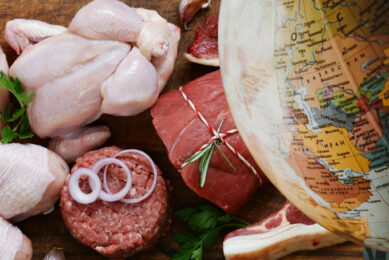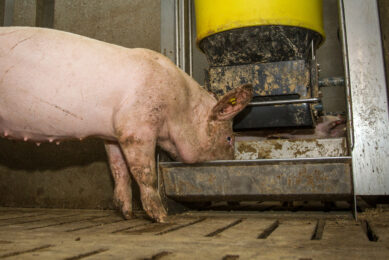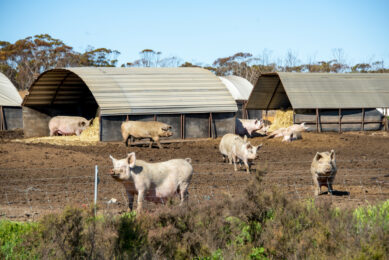Rabobank’s global pig forecast: Lower costs, geopolitical challenges

Agribusiness bank Rabobank is expecting pig production to benefit from lower feed costs as well as an improved productivity. Yet the bank warns that trade could remain being impacted by geopolitical tensions as well as health challenges.
Every 3 months, the bank releases a global pork quarterly report – just like it does with all other animal sectors, with input of many of the bank’s senior market analysts in the field of animal protein.
Trade negotiations between US and China
Ongoing trade negotiations continue to fuel instability in global pork markets, the bank wrote in a press release, in particular pointing to those between the 2 largest trade blocks in the world: US and China. Although China has scaled back imports from the US in recent years – largely due to increased local production – it remains a significant importer of US pork variety meats. The outcome of current negotiations between the 2 countries could have far-reaching implications for global trade, Rabobank said. For the United States, things have looked rosy in the first half year of 2025. Prices for hogs were US$ 110 per hundredweight (a measure in the US to express value per 100 lbs = 45.4 kg), which is 23% higher than in the previous period in 2024.
In its overview, the bank pointed to the fact that China retains an additional 10% tariff on US pork imports in response to US tariffs elsewhere. The bank mentioned that China’s import of US pork variety meat dropped 15% in the first half of 2025 when compared to 2024.
Brazil and the EU profiting
Global pork trade, however, is expected to grow, the bank added. There are supply shortages in Mexico, South East Asia (e.g. the Philippines) as well as Japan. That is benefiting exporting nations like Brazil (exports growing rapidly, +18% in the first half year of 2025) as well as countries in the European Union (+5%).
African Swine Fever and PRRS having influence
With regard to pig diseases, herd health remains a key concern for producers worldwide. African Swine Fever (ASF) continues to spread in parts of Asia and Europe, the bank wrote, while Porcine Respiratory and Reproductive Syndrome (PRRS) hampers productivity in North America and Spain. In addition, the bank also pointed to Foot-and-Mouth Disease (FMD) adding further uncertainty to trade. Advanced biosecurity, automation, and unmanned operations help mitigate these risks.
Lastly, with regard to corn prices the bank said that lower prices continue to fall on the back of favourable US weather conditions and a strong corn crop in Brazil. Soybean and soymeal markets, however, have shown mixed signals. The US Environmental Protection Agency’s (EPA) proposed biofuel mandates for 2026 and 2027 support soybean prices, while exerting downward pressure on prices of soymeal, the bank wrote.











